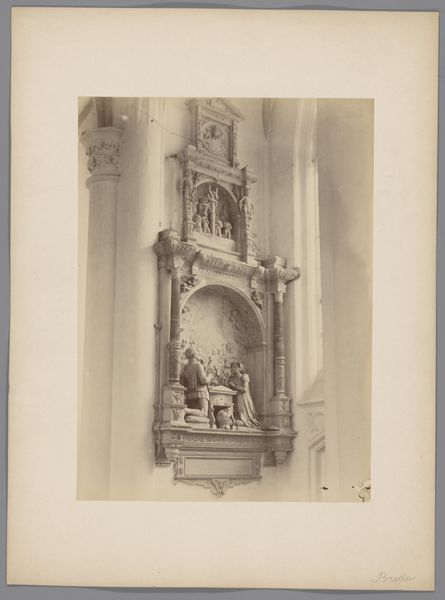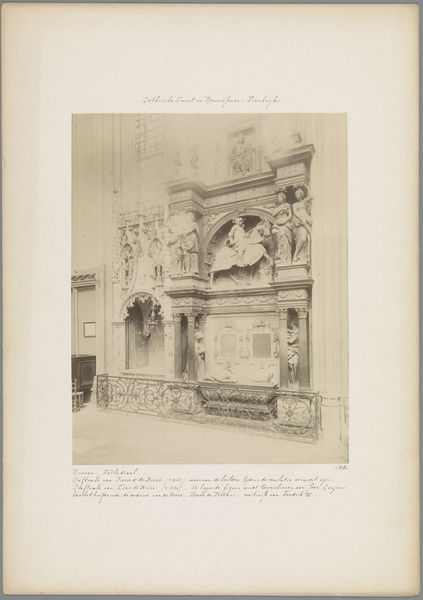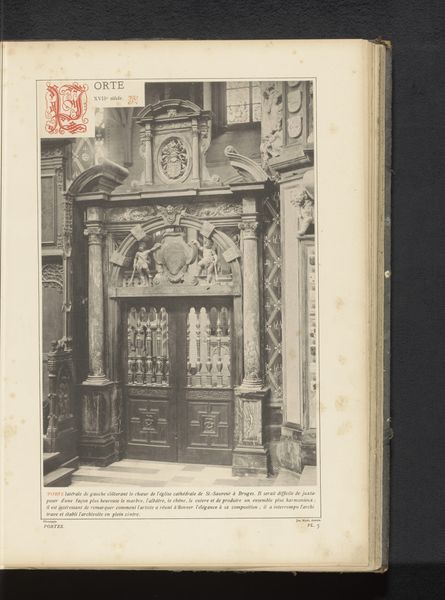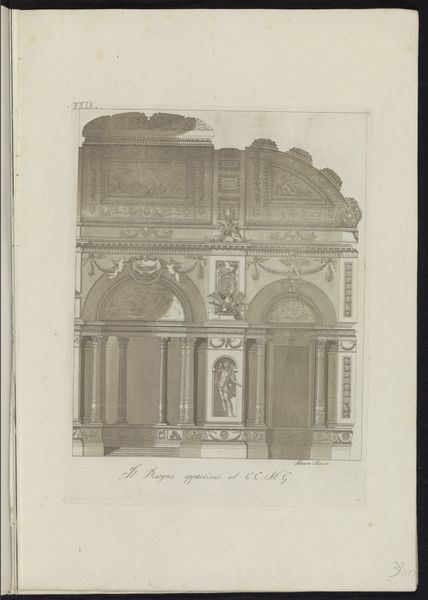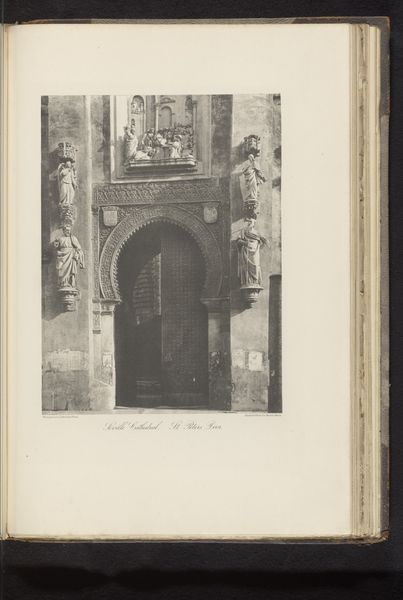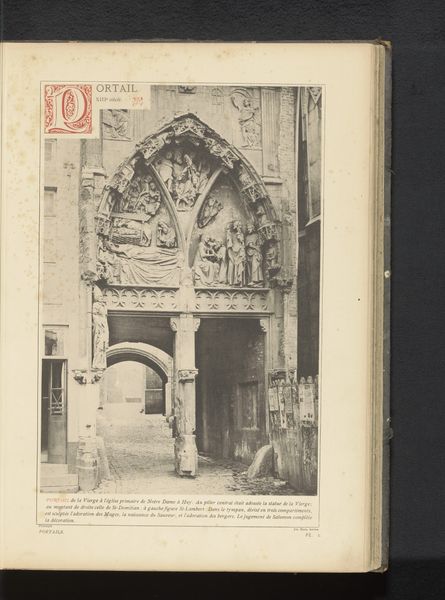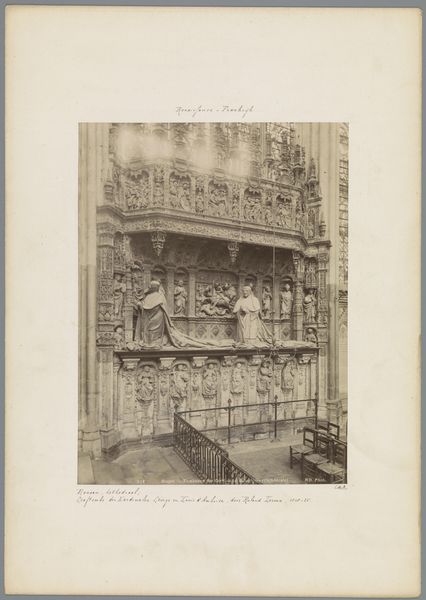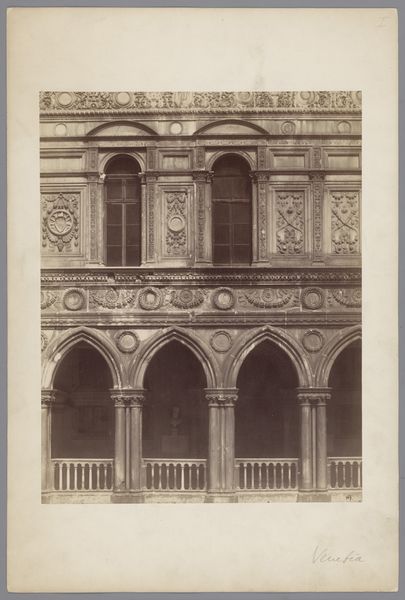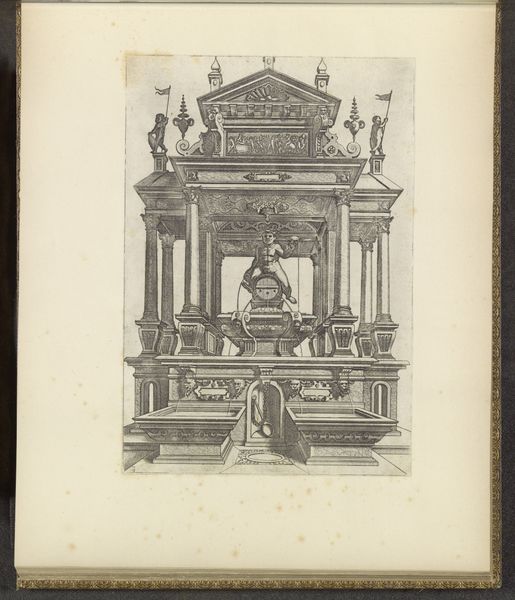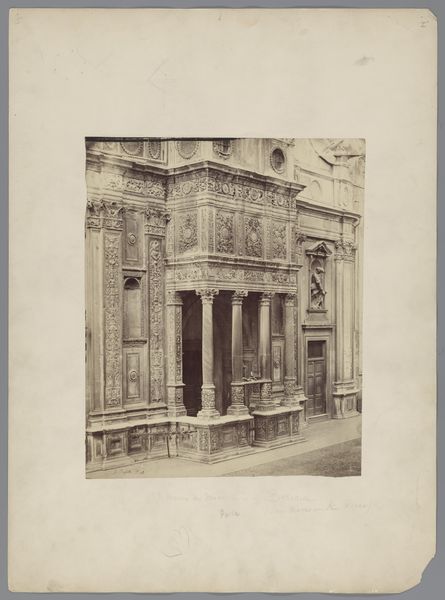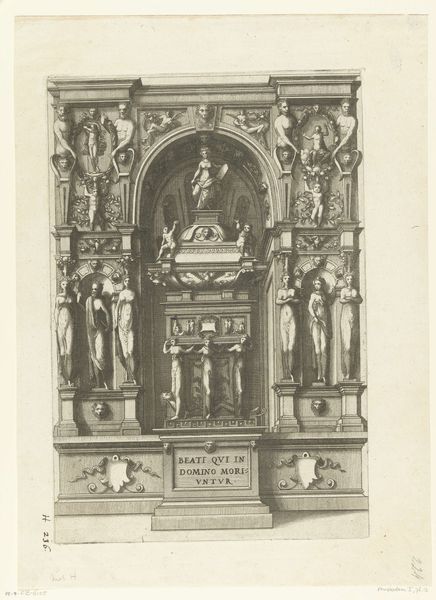
Gezicht op de graftombe van Louis de Breze in de Notre-Dame kathedraal in Rouen 1850 - 1900
0:00
0:00
print, photography
# print
#
photography
#
ancient-mediterranean
Dimensions: height 345 mm, width 259 mm
Copyright: Rijks Museum: Open Domain
Curator: It has a hushed, solemn feeling. A sense of respectful quiet. Editor: We're looking at a print, dating from between 1850 and 1900, of the tomb of Louis de Breze, found inside the Notre-Dame Cathedral in Rouen. It appears this artwork comes from an anonymous creator. Curator: The stark, muted tones really bring out the weightiness of the stonework. You can almost feel the chill of the cathedral. It definitely triggers an emotional response relating to death, the passing of time. A little morbidity, perhaps? Editor: Indeed. Considering that this image was made sometime in the mid to late 19th century, this photograph itself carries a historical dimension. Notre-Dame, as a sacred space, held immense power and cultural significance; the monument to de Breze speaks to the man's status but also the way these figures were publicly memorialized and the statements made by the powerful families tied to these burials. Curator: Those equestrian statues especially seem to suggest authority and control. The mounted figure, so stoic and upright—a very potent and consistent visual metaphor throughout history. What fascinates me is that despite being an architectural scene, there is something ancient at play here, beyond the implied date. The image echoes and reiterates certain cultural tropes about how leaders are memorialized. It also makes us contemplate how cultures deal with mourning through art. Editor: Exactly. Think about who was commissioning these kinds of photographs. Wealthy tourists? Historians documenting the national patrimony? There's a whole industry around framing, capturing, and marketing these images of national pride. Even though it’s just a print of a monument, it tells us about how people during this time saw their own history and culture. The architecture suggests grandeur and continuity while referencing classical sculpture. This continuity provided an implicit justification for power and cultural dominance. Curator: It’s fascinating how this photographic print captures more than just the literal tomb; it embodies layers of cultural values, attitudes, and psychological triggers about loss and authority that linger across centuries. Editor: It leaves you to consider: what narrative is this photo trying to build about French history, and about Louis de Breze’s place within it?
Comments
No comments
Be the first to comment and join the conversation on the ultimate creative platform.
